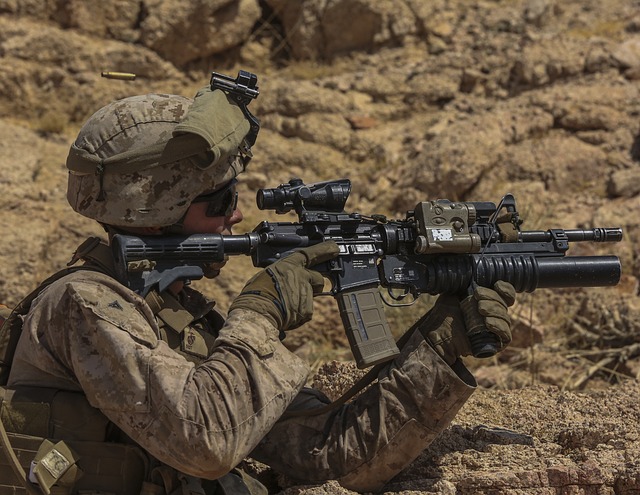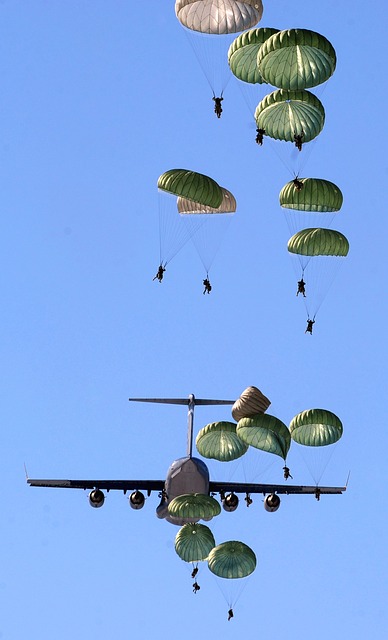The US Army Reserve Flag's evolution reflects changes in military strategy and identity, with intricate designs balancing historical honor and modern values. It serves as a powerful symbol of pride and purpose for reservists worldwide, fostering camaraderie through visual narratives connecting soldiers across generations. Heraldry integral to the flag promotes unit recognition, discipline, and cohesion, while its design boosts morale and tells unique stories of history and achievements. Today, the flag plays crucial roles in ceremonies, training, community events, recruitment, and education, facilitated by advanced technology enabling accessible reproduction.
“Unveiling the symbolism behind the US Army Reserve Flag, we explore its historical evolution and place within military identity. From its early designs to modern interpretations, this article delves into the rich tapestry of Army insignia and heraldry. We decipher the meaning behind intricate symbols, their role in fostering a sense of community, and how these traditions adapt to contemporary usage. Join us as we navigate the fascinating world of Army Reserve flags, where each stitch tells a story.”
- Historical Evolution of US Army Reserve Flag Design
- Symbolism and Meaning in Army Insignia
- The Role of Heraldry in Military Identity
- Modern Interpretation and Usage of Army Flags
Historical Evolution of US Army Reserve Flag Design

The historical evolution of the US Army Reserve Flag is a fascinating journey that reflects changes in military strategy, identity, and values. The flag’s design has undergone several transformations since its inception to become a powerful symbol of reserve forces. Initially, Army reserves were not distinguished from active-duty units, with their identities blending into the broader military landscape. As the role of reservists became more defined, however, so did their visual representation.
In the mid-20th century, the US Army Reserve adopted flags that incorporated traditional military symbols such as the American flag and elements specific to reserve units. These designs showcased the unit’s heritage and commitment to service. Over time, the flags became more intricate, adding unique features that set them apart from active-duty flags. The current design of the US Army Reserve Flag strikes a balance between honoring history and embodying modern values, ensuring it remains a powerful symbol of pride and purpose for reservists worldwide.
Symbolism and Meaning in Army Insignia

Army insignia, present on flags, uniforms, and emblems, serve as powerful visual representations of military units, their history, and values. Each symbol carries a unique meaning, contributing to a rich narrative that connects soldiers both past and present. For instance, the US Army Reserve Flag boasts a distinctive design with symbols like the eagle, representing strength and freedom, and the colors red, white, and blue honoring the nation. These emblems not only foster a sense of unity among troops but also symbolize their commitment to service and protection.
Insignia often draw from historical events, military achievements, or cultural heritage. They can signify battles won, valor displayed, or specific roles within the army. By wearing or displaying these insignia, soldiers proudly proclaim their affiliation, discipline, and legacy, fostering a sense of belonging and camaraderie. Understanding the symbolism behind each element allows for a deeper appreciation of the rich tradition and heritage that Army insignia represent.
The Role of Heraldry in Military Identity

Heraldry plays a significant role in military identity, serving as a visual representation of a unit’s history, values, and achievements. In the context of the US Army Reserve Flag, for instance, each element incorporated – from the colors to the symbols – carries deep meaning. The flag acts as a symbol of unity, pride, and shared purpose among reservists, fostering a sense of belonging and camaraderie that transcends time and distance.
Moreover, military insignia and heraldry facilitate easy recognition on the battlefield and during training exercises. They contribute to discipline and cohesion within units, reinforcing the importance of tradition, honor, and duty. The US Army Reserve Flag, with its distinctive design, serves as a powerful tool for enhancing unit morale and instilling a sense of legacy among its members, connecting them to the rich history and values of the military they serve.
Modern Interpretation and Usage of Army Flags

The modern interpretation of army flags, including the iconic US Army Reserve Flag, has evolved to serve multiple purposes beyond their traditional role as symbols of military might. Today, these flags are integral to unit identity and morale, often displayed during ceremonies, training exercises, and community events. The design elements within each flag tell unique stories, reflecting the history, achievements, and core values of their respective units. For instance, the US Army Reserve Flag boasts a distinct color scheme and emblem that signify the reserve component’s readiness, resilience, and dedication to serving the nation.
The usage of army flags has expanded to include promotional and educational roles. They are used to raise awareness about the contributions of military reservists, recruit new members, and foster community engagement. The vibrant colors and recognizable insignia make these flags versatile tools for marketing and public relations efforts. Moreover, modern technology has enabled the reproduction of high-quality flags at affordable prices, making them easily accessible for units worldwide.
The US Army Reserve flag, with its rich history and symbolic design, serves as a powerful representation of military heritage and unity. Through the evolution of its insignia and heraldry, this flag tells the story of resilience, sacrifice, and pride. As we embrace modern interpretations, it continues to foster a strong sense of identity and camaraderie among Army Reserve members, preserving their unique place in American military history.
